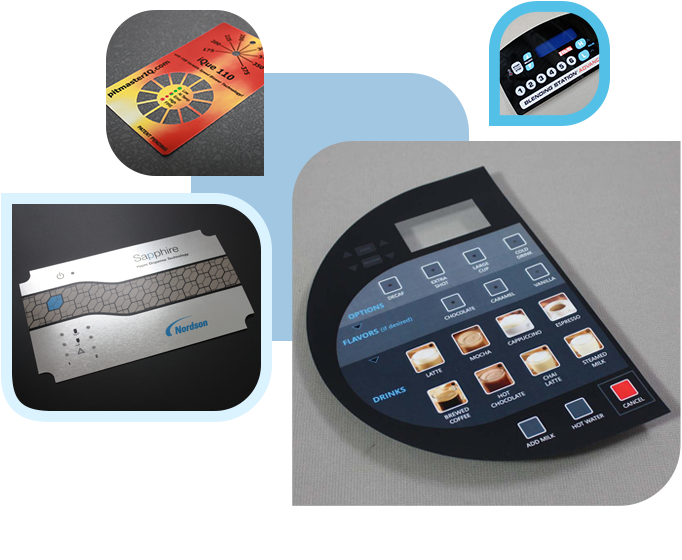Recognizing Exactly How Graphic Overlays Work to Boost Your Imaginative Tasks
Graphic overlays offer as a critical part in the world of creative tasks, enhancing both visual interaction and target market involvement. The successful combination of these overlays calls for cautious factor to consider of design concepts and purposes.
What Are Graphic Overlays?
Graphic overlays are aesthetic elements that are placed on top of a base picture or user interface to boost interaction and customer experience. They offer various objectives, including supplying added information, leading user communication, and enhancing visual appeal. Typical applications of graphic overlays can be found in digital user interfaces, advertising and marketing, and educational products.

Graphic overlays are typically produced using layout software program, enabling developers to manipulate color, dimension, and transparency to attain the preferred effect. They can be vibrant or fixed, with animations that attract the audience's eye and boost interaction. The critical use graphic overlays not only boosts visual hierarchy yet additionally aids in delivering a clear and systematic message. Recognizing how to successfully implement visuals overlays is essential for designers aiming to raise their innovative jobs.

Benefits of Using Graphic Overlays
Using visuals overlays can considerably improve the performance of aesthetic interaction across various tools. One of the key advantages is the capability to communicate complicated info succinctly. By layering graphics, text, and photos, overlays promote the discussion of data in a much more digestible format, making it easier for target markets to comprehend essential principles swiftly.
Additionally, graphic overlays can enhance aesthetic allure, accentuating certain elements within a design. This is particularly useful in advertising and marketing and advertising, where capturing the visitor's passion is vital. The strategic use colors, forms, and typography in overlays can create a engaging and natural visual narrative, improving brand name recognition.
In addition, graphic overlays provide flexibility in layout. They allow makers to adapt material for different systems without going back to square one, ensuring consistency throughout different networks. This versatility is vital in today's electronic landscape, where material should be maximized for diverse devices and styles.
Kinds Of Graphic Overlays
When considering the different types of graphic overlays, it is vital to recognize their diverse applications across various sectors. Graphic overlays can be classified primarily into browse around these guys three types: useful, attractive, and informational.
Practical overlays are created to boost the usability of a product. Frequently located in digital tools, these overlays typically provide tactile feedback with increased buttons or distinctive surfaces, improving user interaction. They can also act as a protective layer, protecting the underlying elements from deterioration.
Ornamental overlays concentrate on visual improvement, permitting brand names to reveal their identification via dynamic styles and customized graphics. These overlays prevail in product packaging, advertising and marketing, and point-of-sale materials, where visual allure is crucial for attracting clients.
Educational overlays, on the other hand, are used to share vital information or guidelines. They can be seen in applications such as signage, user handbooks, and training graphics, where clearness and readability are paramount.
Each sort of graphic overlay offers an one-of-a-kind function, adding to the general effectiveness of imaginative jobs while addressing specific requirements within various sectors. Comprehending these distinctions is vital for choosing the ideal overlay for your project.
Ideal Practices for Application
To guarantee the effective execution of visuals overlays, it is essential to develop a clear understanding of the project's goals and the details requirements of the end-users. Begin by conducting complete study to determine the target market and their choices, as this will certainly educate layout choices and functionality.
Next, create a detailed plan that describes the overlay's integration, purpose, and format procedure. This strategy must include interface factors to consider, guaranteeing that overlays enhance rather than obstruct the user experience - Graphic Overlays. Consider the aesthetic hierarchy and keep uniformity in layout aspects, such as color plans, icons, and typefaces, to promote brand name coherence
Testing is necessary; collect feedback from a depictive sample of individuals to identify potential issues and areas for improvement. Iterate on the layout based on user input and efficiency data. Furthermore, guarantee compatibility throughout various tools and platforms to make best use of access.
Tools for Developing Overlays
Creating efficient visuals overlays needs Learn More Here the right devices to translate layout ideas into useful applications. Numerous software application and systems are readily available, each tailored to specific needs and skill degrees.
Adobe Photoshop and Illustrator are sector standards, using comprehensive abilities for developing and manipulating overlays. These tools give innovative attributes such as layer management, blending modes, and vector graphics, allowing designers to produce top notch and detailed overlays.
For those looking for an extra a fantastic read user-friendly method, Canva and Figma are outstanding options (Graphic Overlays). Canva's user-friendly interface enables customers to produce overlays swiftly utilizing pre-designed themes, while Figma promotes collaborative design in real-time, making it perfect for teams
Additionally, open-source options like GIMP and Inkscape provide robust performances without the associated costs of proprietary software application. These tools enable flexibility in design and can suit numerous data formats, ensuring compatibility across various platforms.

Verdict
In conclusion, graphic overlays offer as powerful devices for enhancing imaginative projects by offering aesthetic quality, aesthetic charm, and brand name consistency. By comprehending the basic principles and benefits connected with graphic overlays, designers can significantly enhance the high quality and performance of their visual communications.
Graphic overlays offer as an essential part in the world of creative jobs, improving both visual communication and audience interaction.Graphic overlays are usually created using style software, allowing designers to control color, transparency, and dimension to attain the preferred result.Additionally, visuals overlays can improve aesthetic charm, drawing focus to specific components within a style.Furthermore, graphic overlays offer flexibility in layout.In conclusion, visuals overlays serve as powerful devices for boosting innovative jobs by supplying visual clarity, visual charm, and brand name consistency.